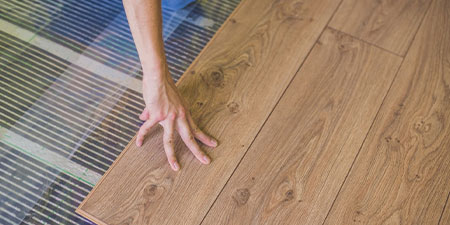
Heating
Heating
Among the questions we are asked most frequently is how best to heating a garden office. The answer depends on its size, how you will use it, the power sources you have and your budget. It’s certainly an important choice, because in our climate, you need to ensure your workshop, office or garden leisure room is going to be welcoming and comfortable all year round.

Electric Convection Heaters

Electric convection heaters are the probably the most widely-used option. They are excellent for garden offices required for year-round use, as they heat the air quickly and can be free standing or wall mounted. Most are available with 24-hour timers and are thermostatically controlled, which is ideal to pre-warm an office before your day begins, to switch themselves off if you get some nice sunshine, and to prevent offices becoming too cold overnight and affecting computers or other items being stored. They are relatively cheap to buy and install, not requiring a separate energy source if you have electricity supply already, and there are a wide range of suppliers.
Electric Radiators
Electric radiators are available in both traditional and modern styles. Like central heating radiators in the home, they are wall mounted but have an electric element instead. They are slower to heat up than convection heaters and offer slightly less temperature control, although they too can be linked to thermostats and timers to pre-warm your garden office. They are a much safer option in dusty environments like a woodwork shop as they have no exposed heating element.

Electric Oil Filled Radiators

Electric oil filled radiators tend to be free standing, which offers usage flexibility but at the price of taking up floor space. The oil retains heat, maintaining warmth for longer after they are switched off, which again can be via a thermostat or timer. Breadth of choice and styling tends to be more limited than wall-mounted heaters as above, but they are low in cost and widely available with no installation required.
Wood Burners
wood burners look fantastic in a timber cabin, whether traditional or contemporary, and they perform well too. They warm quickly, retain heat and are carbon-neutral if you can use a sustainable local fuel source. Do please remember they must be professionally installed by a HETAS engineer to ensure your safety. The cost of a stove unit itself may appear attractive, but do the math including the flue and installation which can add up to a larger sum. And draw lots for whose turn it is to empty the ashes…

Underfloor heating

Underfloor heating can be effective as a secondary heat source. It frees up wall space and feels lovely underfoot, but may not be effective or economical as the main heat source. In the home, underfloor heating normally relies on large floor areas being gently heated with water-filled pipework, and is most effective in floor surfaces which retain heat such as concrete or tiles. More suitable for most garden rooms, electric underfloor heating runs on a mesh element which is cut to size and fitted below the floor. The draw backs are that it is more expensive to install than electric heaters, it limits the choice of floor coverings and any maintenance problems will require the floor being lifted.
Air Conditioning
Air conditioning can both heat and cool the air and help maintain a constant temperature and humidity level. It can be a good choice in garden buildings where the building is in full sunlight all day, or where activity creates heat (lots of IT equipment, perhaps, or a kiln) or where you store items which need to be protected from heat or damp (such as fabrics or paper). The new generation of air conditioners do not require external or unsightly refrigeration units which can create a noise disturbance for you and your neighbours, they are low noise, slimline, internally mounted units and are relatively cheap to run. Find out more
Solar Heating System

Solar heat warms water that is passed through a series of tubes mounted on the roof. In the home these systems are used to pre-warm water feeding into a conventional heating boiler. In garden offices or studios, a collector tends to feed a single radiator with warmed water. Equipment can be expensive, though there are various DIY ideas involving drinks cans, rubber hosing and old radiators online. Even for the most ambitious Heath Robinson self-installer, the issue remains that every kind of solar space-heating system works best when you need it least. Reducing fossil fuel use may be better achieved in our Northern climate through passive heating and insulation (see below).






